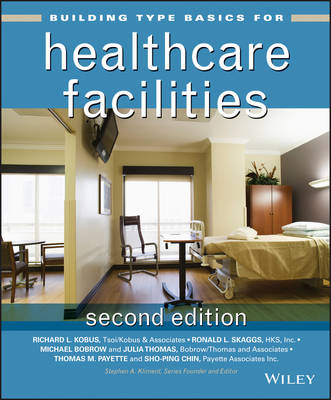Building Type Basics
1 primary work • 2 total works
Book 1
Building Type Basics for Healthcare Facilities 2e
by Richard L. Kobus, Ronald L. Skaggs, Michael Bobrow, Julia Thomas, Thomas M. Payette, and Stephen A. Kliment
Published 21 April 2008
Essential information for the design of healthcare facilities Building Type Basics for Healthcare Facilities, Second Edition is your one-stop reference for the essential information you need to confidently begin the design process and successfully complete a healthcare project, large or small, on time and within budget. Leading architects from across the United States share their firsthand knowledge in order to guide you through all aspects of healthcare facility design, with an emphasis on what you need to do to get started quickly. This edition is revised with multiple new healthcare project examples completed this century, more information on engineering requirements, and background on evolving sustainability and technology issues. It begins with an assessment of the healthcare industry's current and future needs, focusing on how those needs affect architecture. Next you get critical information and guidelines that enable you to create successful designs for inpatient, outpatient, and long-term care facilities.
Coverage includes clinics, emergency departments, ambulatory care units, specialty centers, as well as facilities designed for adaptive reuse or the assimilation of future technologies. This quick reference: Addresses twenty key questions that arise when launching a healthcare facility design project Offers insight from leaders in the industry based on their own design experience Provides hundreds of project photographs, diagrams, floor plans, sections, and details Not only does this book offer current, authoritative information, its comprehensive coverage and logical organization also save you countless hours of research. Building Type Basics books provide architects with the essentials needed to jump-start specialized facilities design. Each volume features leading experts in the field who address the issues that shape the early phases of a project in a convenient, easy-to-use format.
Coverage includes clinics, emergency departments, ambulatory care units, specialty centers, as well as facilities designed for adaptive reuse or the assimilation of future technologies. This quick reference: Addresses twenty key questions that arise when launching a healthcare facility design project Offers insight from leaders in the industry based on their own design experience Provides hundreds of project photographs, diagrams, floor plans, sections, and details Not only does this book offer current, authoritative information, its comprehensive coverage and logical organization also save you countless hours of research. Building Type Basics books provide architects with the essentials needed to jump-start specialized facilities design. Each volume features leading experts in the field who address the issues that shape the early phases of a project in a convenient, easy-to-use format.
Building Type Basics for Elementary and Secondary Schools
by Stephen A. Kliment
Published 1 January 2001
The fastest way to straighten out the learning curve on specialized design projects Building Type Basics books provide architects with the essentials they need to jump-start the design of a variety of specialized facilities. In each volume, leading national figures in the field address the key questions that shape the early phases of a project commission. The answers to these questions provide instant information in a convenient, easy-to-use format. The result is an excellent, hands-on reference that puts critical information at your fingertips. Building Type Basics for Elementary and Secondary Schools provides the essential information needed to initiate designs for preschools and kindergartens as well as elementary, middle, and high schools. Filled with project photographs, diagrams, floor plans, sections, and details, it combines in-depth coverage of the structural, mechanical, acoustic, traffic, and safety issues that are unique to school buildings with the nuts-and-bolts design guidelines that will start any project off on the right track and keep it there through completion.

